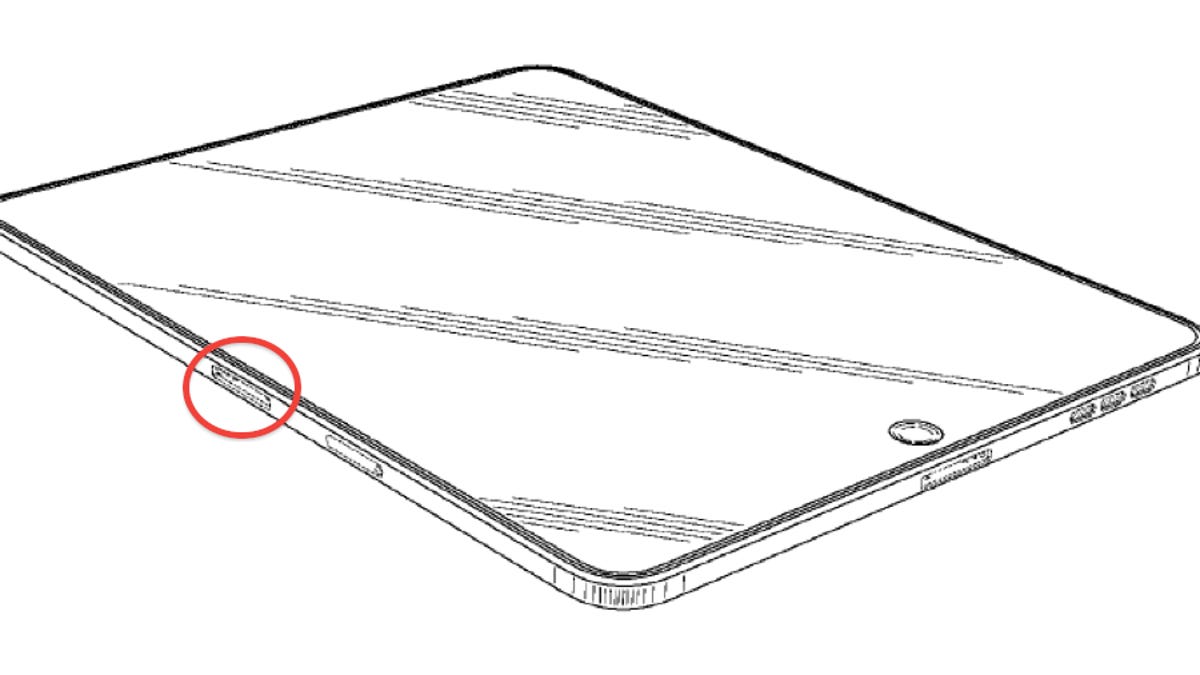Apple granted horizontal docking iPad patent
Apple has been granted a patent for a side-mounted port on the iPad, as well as 15 other patents, several of which relate to the company's iOS platform.
While Apple was busy talking to one part of the U.S. government today as part of a congressional hearing, another branch was granting the company a slew of patents, with one of the most interesting ones being a design for an iPad with an additional connector slot on the side of the device.
Readers with sharp memories might remember seeing this same design before, though not in a shipping product. Apple filed an identical ornamental design patent with the Trade Marks and Designs Registration Office of the European Union early last year, which was made public in October. Both that one and today's were picked up by blog Patently Apple.
The design, which is dubbed simply "portable display device," credits Apple CEO Steve Jobs, Apple industrial design chief Jonathan Ive, and 13 others as inventors.
Both the first- and second-generation of Apple's iPad continue to have one 30-pin connector port on the bottom of the device, matching the placement in the iPhone and iPod Touch. This lets it dock with Apple's official dock with just one orientation, whereas a device with two ports could allow an additional configuration. The unveiling of the EU side port patent last year had some guessing that the iPad 2 would feature such a side port, which turned out not to be the case.
The extra port could also open up the device to work with additional accessories that required the I/O, a limitation Apple's recently gotten around with its own add-ons, such as the Digital AV Adapter. This $39 accessory, which was released alongside the iPad 2 earlier this year, adds an additional dock port next to the HDMI out connector so users can plug it into a monitor, while continuing to charge or sync. Meanwhile, older accessories like the iPad camera adapter kit require exclusive use of the slot.
Other patents
Along with the iPad design patent, Apple was also granted 15 other patents, including one for DVD authoring software iDVD, which makes up a component of Apple's iLife suite. There are also a handful of iOS-related patents, including one for the use of Cover Flow album art viewing, the virtual keyboard users type on, and a way to turn Web page content into widgets that can be saved for viewing in the mobile version of Safari. Out of these, the virtual keyboard patent could have one of the most dramatic effects on the competitive landscape of smartphones and other touch-screen devices.
Software-based keyboards have become a standard feature of these gadgets, and Apple's patent covers one that can adjust to include multiple number and letter sets, as well changing forms to match the needs of whatever application is running. Such capabilities were touted as major advantages to standard hardware keyboards when Jobs first introduced the original iPhone. Given Apple's ongoing litigation with Samsung over the company "copying" its mobile devices, this could add extra fuel to the fire.
The Web widget patent should also be of special interest to iOS users who've been clamoring for some sort of widget system on the mobile software. Apple first introduced Web Clips as a feature in the version of its Safari browser for Leopard. It let users grab specific snippets of Web sites, which would act as widgets in OS X's Dashboard feature. This meant that if you clipped something like a group of links from the front page of CNET News, those links would stay updated with new content, even if you did not update the widget code.
Such a feature on iOS might let users grab specific parts of Web sites for use as information widgets. As described in the patent, creating these in the first place would be accomplished through the use of a gesture. Another gesture would be used to call them up and switch between them, the patent summary says.
As with all other patent-related posts, it's worth noting the unreleased designs and features that show up in these patents are not guaranteed to become a part of shipping products. Nonetheless, many have, which can make them fascinating.


